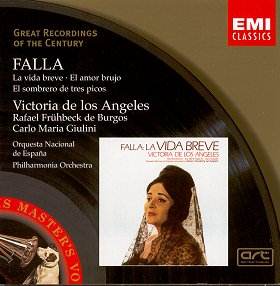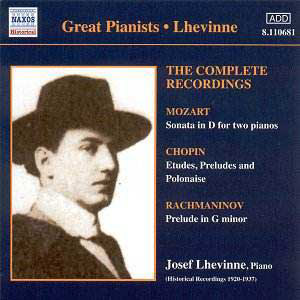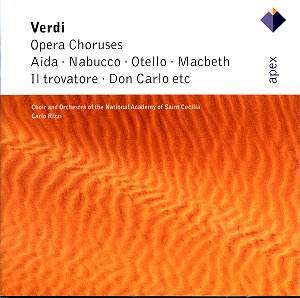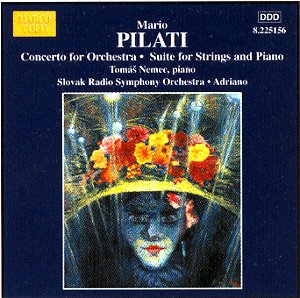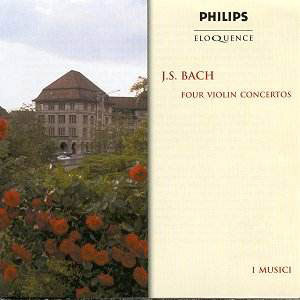 Composer: J.S. Bach
Composer: J.S. Bach
Works: Violin Concertos BWV 1041, BWV 1042; Double Concerto for Two Violins BWV 1043; Concerto for Violin and Oboe BWV 1060
Performers: Roberto Michelucci, violin; Felix Ayo, violin (BWV 1043); Leo Driehuys, oboe (BWV 1060); I Musici
Recording: Recorded 1958-1961
Label: Philips Eloquence 456 554-2 [69’56]
The oeuvre of Johann Sebastian Bach, particularly his concertos, stands as a testament to the Baroque ideal of combining technical prowess with profound expressiveness. The four violin concertos presented in this recording by I Musici, made between 1958 and 1961, encapsulate Bach’s intricate polyphony and emotional depth. Each work reveals a different facet of Bach’s genius, from the lyrical beauty of the E Major Concerto to the intricate dialogue of the Double Concerto, highlighting the composer’s ability to weave complex musical conversations within a framework of rigorous structure.
Roberto Michelucci’s interpretation of the E Major Concerto (BWV 1041) reveals a deliberate approach, particularly in the opening Allegro. His choice of a slower tempo allows for a thoughtful exploration of the harmonic landscape, though it occasionally impedes the natural forward momentum one might expect from this vivacious work. The bass line, while solid, can at times feel a touch ponderous, detracting slightly from the fluidity of the melodic lines. Nevertheless, Michelucci’s use of quick slides in the Adagio showcases his technical dexterity and expressive intent. The meticulously crafted orchestral diminuendo before the violinist’s entry in the concluding Allegro creates a moment of palpable tension, even if a noticeable editing flaw at 2’47 disrupts the flow.
In the A Minor Concerto (BWV 1042), Michelucci maintains a similarly contemplative pace, which allows for a contrasting richness between the solo violin and the lean, resonant lines of the cellos and basses. The Andante’s orchestral descent at 6’30 is particularly notable, evoking a deep emotional response that underscores the inherent drama within Bach’s writing. The slow unfolding of the thematic material, paired with an aristocratic approach to phrasing, elevates the performance beyond mere technical execution, inviting listeners to engage with the music on a deeper level.
The collaboration between Michelucci and Ayo in the Double Concerto (BWV 1043) is marked by a careful articulation of note values and a deliberate tempo. While some listeners may find this approach sluggish, it serves to highlight the noble character of the music. Their performance reveals moments of striking plasticity, especially in the extreme diminuendo at 8’00 in the slow movement, which stands as an eloquent testament to their interpretative choices. The ongoing interplay between the two violins, imbued with harmonic complexity, is illuminated through their careful dynamic contrasts, which may resonate more with those attuned to a more traditional interpretation of Bach.
The Concerto for Violin and Oboe (BWV 1060) offers an affectionate yet less emotionally charged performance compared to contemporaneous interpretations, such as the Menuhin-Goossens recording. The harpsichord continuo, though subtly audible, lends a necessary historical context to the work, even if it occasionally feels overshadowed by the prominent solo lines. I Musici’s ensemble playing is commendable, though at times it lacks the vigor found in more modern recordings, which tend to embrace a more vibrant approach to Bach’s lively rhythms and textures.
This set of recordings captures I Musici’s evolving style in the early 1960s, reflecting a careful consideration of Bach’s intentions while also revealing the ensemble’s unique interpretative voice. The sound quality, while of its time, retains a warmth that complements the period instruments, although contemporary listeners may note a certain lack of clarity in the orchestral textures compared to modern standards.
Engaging with this collection offers a rewarding experience for those willing to appreciate a more measured interpretation of Bach’s concertos. The performances, while not without their flaws, provide a rich tapestry of harmonic detail and emotional nuance that invites reflection. For aficionados of early music, this recording serves as a significant document of I Musici’s artistic journey, presenting a nuanced, if somewhat traditional, view of Bach’s enduring legacy.
